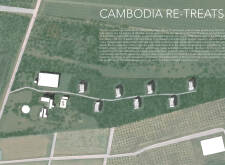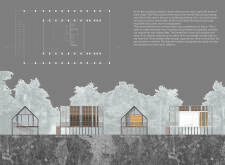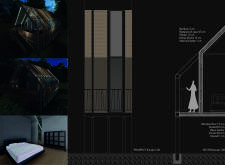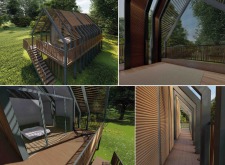5 key facts about this project
The project is an architectural design that exemplifies functionality and resonates with its contextual environment. This structure, situated in [insert location], serves as a multifaceted space accommodating [insert primary functions such as residential, commercial, cultural, etc.]. The design prioritizes user experience while effectively addressing the needs of its occupants.
The architectural composition encompasses a series of interconnected spaces, showcasing a thoughtful arrangement that allows for both privacy and community interaction. Key functional areas include [list major components such as living areas, workspaces, or communal zones]. The design optimally utilizes natural light and ventilation, enhancing environmental comfort while minimizing energy consumption. The exterior materials, predominantly [list materials used, e.g., reinforced concrete, timber, glass], were selected for durability and aesthetic appeal, integrating seamlessly with the surrounding landscape.
Innovative Design Approaches
What distinguishes this project from standard architectural designs is its unique approach to sustainability and contextual relevance. The architects utilized passive design strategies, effectively incorporating elements like [mention design features such as overhangs, shading devices, or thermal mass] to optimize energy efficiency. Additionally, the building’s orientation takes advantage of natural elements, such as sunlight paths and prevailing winds, to maximize comfort without relying heavily on mechanical systems.
Moreover, the project features [discuss unique aspects, such as community-oriented spaces, green roofs, or water management systems]. These elements support ecological sustainability and promote a sense of community among users. The innovative use of materials also reflects a commitment to authenticity, with a preference for local suppliers.
Spatial Organization and User Experience
The spatial organization demonstrates a clear hierarchy of spaces, with distinct zones for different activities. The arrangement encourages interaction while maintaining functional clarity. Key elements include [describe features such as open floor plans, transitional spaces, or multipurpose areas]. These design decisions foster versatility, allowing spaces to adapt to various uses over time.
Interior finishes adhere to a cohesive design language, employing a neutral color palette that enhances light reflection and contributes to an open, airy environment. The integration of technology within the architecture supports contemporary living, with systems designed to improve user convenience and efficiency.
To understand the full scope and depth of this project, readers are encouraged to explore the architectural plans, architectural sections, and architectural designs that provide essential details on the project's layout and functionality. A closer examination of the architectural ideas behind this design will reveal the thorough research and thoughtful consideration that informed its development.






















































